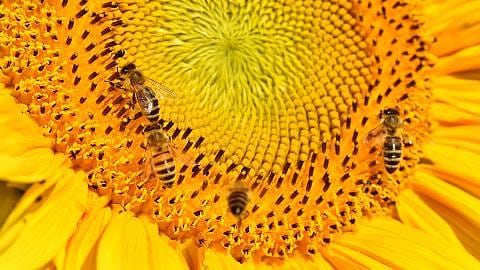Mindful eating for better digestion
Digestion – What Happens in Our Body When we Eat
What does our digestive tract have to do with good nutrition, especially if we are feeling well? Normally, our entire digestive process takes place without us even noticing. Yet so many of our organs play a role in digestion.
It starts with our eyes and nose. Our olfactory organ, the nose, "pre-tastes" our food. A signal from the olfactory nerves signal the start of our rhythmic "digestive ballet". Then we open our mouth and insert food into our oral cavity. Before that, our eyes have already perceived the food's colours, consistency and composition on our plate. Sometimes this alone can trigger an increased flow of saliva. Yet all too often we fail to eat mindfully, slowly and deliberately. While savouring our meal or wolfing it down in a rush, it's hard to remember that digestion begins with the mechanical process of chewing.
Healthy digestion – a rhythmic process
We've all seen or done it before: eating in a hurry, eating while standing or on the run. All the same, it's not doing us any good. Digestion follows a constant rhythm, which enables our body to extract nutrients from the food we eat and then excrete unnecessary substances as waste.
This complex digestive process starts in our mouth. The more thoroughly we chew, the better. Our chewing movements and the production of saliva can be regarded as a first rhythmic activity. It brings our food to body temperature and lubricates it. Enzymes in our saliva break down the food to help digestion. Muscles in the oesophagus then push the crushed food into our stomach, past the rhythms of our beating heart and breathing lungs. Later, these two organs will absorb the nutrients from our food in the form of blood.
We can assume that the quality of our digestion is influenced by how mindfully we eat. We often encounter digestive disorders because we do not properly experience our food. This could be because its natural taste has been artificially altered, or because we are distracted while eating by other activities. We often don't take enough time to thoroughly chew, insalivate and appreciate our food.
3 mindful steps for better digestion
- See your food. What does my food look like in terms of shapes and colours?
- Smell your food. How does my food smell? Smelling food triggers salivation.
- Chew your food. The more thoroughly we chew, the better it is for our stomach, small intestine and large intestine.
The gastrointestinal tract
The gastrointestinal tract is an anatomically and functionally divided muscular organ system with several sections. In our digestive organs, food is gradually degraded and absorbed, transferring nutrients into the bloodstream. The term “metabolism” refers to all of the processes in which our body breaks down food molecules (catabolism) and obtains energy to produce heat and build up new substances (anabolism) essential to life. Anything that cannot be used by the body is concentrated and then excreted as waste.
The stomach
Our stomach moves a lot more than we realise. Once our food gets to the stomach it is subject to further rhythms. The movements in our stomach, called gastric peristalsis, further crushes, liquefies and mixes the ingested food. Pathogens that may have entered the mouth are killed in the stomach by hydrochloric acid, and proteins are broken down. The partially digested food mass moves from there into the small intestine.
The small intestine
This is where the most important phase of our digestion takes place. The small intestine has its own rhythm as the intestinal muscles contract and release. This is where gastric acid is neutralized, and the ingested food fully digested with the help of enzymes from the small intestine, secretions from the pancreas and bile from the gall bladder. This process requires a lot of space, which explains the size of the small intestine – approximately 180 square metres. The entire small intestine is dedicated to breaking down food on the one hand, and absorbing its nutrients on the other hand. External structures are broken down and transformed according to the body's own needs. In the small intestine, a lactose or other food intolerance will make itself noticed, as will foods that can trigger an allergic reaction.
Food components that the body cannot absorb are then excreted. Anything that does not increase our energy balance is concentrated in the colon and excreted together with metabolic waste products via the rectum.
Colon and rectum
Starting with the large intestine, everything is programmed to exit the body. No digestion takes place in the rectum. While the small intestine is nearly devoid of bacterial flora, the colon is inhabited by countless microorganisms.
Rhythm in the intestines
Both of the intestines' main sections, small and large, move in the rhythmic waves of peristalsis. Like the heart, the small intestine never rests. Also called the small bowel, it is constantly in motion at minute intervals, and only in a downward direction. In contrast, the large intestine, also referred to as the lower bowel or colon, moves more slowly. Movement at its end goes in the opposite direction, ensuring that waste is not unintentionally expelled.
When our body, soul and spirit are in a healthy balance, digestion usually occurs without discomfort. However, irregular eating habits, rushing about and stress can lead to digestive disorders such as flatulence, bloating or constipation.








